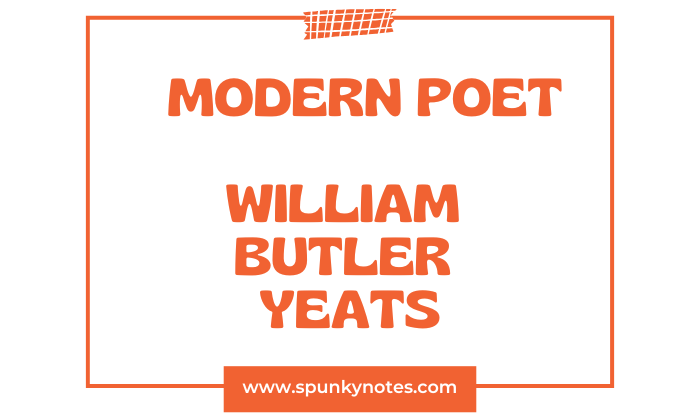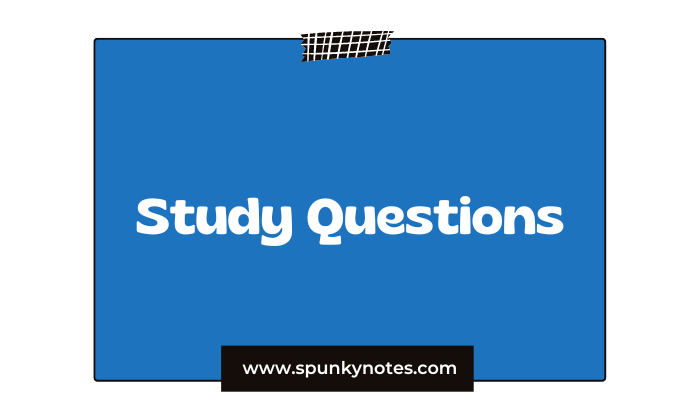
Q. Discuss W.B. Yeats as a Modern Poet.
W. B. Yeats is one of the most influential figures in modern literature. His work helped shape poetry in the early 20th century. Yeats was instrumental in developing modernism, a movement that sought to break away from traditional forms and tackle new themes and subjects.
Yeats’s Transition from Tradition to Modernism
In his early career, Yeats’s poetry was influenced by romanticism and Symbolism. Works like The Wanderings of Oisin (1889) contain Irish myth and natural beauty. His early poems followed more traditional structures, using rhyme and meter.
But as Yeats grew older, he moved away from these formal styles. This shift became more precise in his later works like The Tower (1928) and The Winding Stair (1933). These last poems show a more experimental approach to form.
Yeats combined modernist ideas with his unique voice. This transformation helped shape the modernist style, which emphasized breaking away from traditional forms and writing in a way that reflected the disorienting and fragmented nature of the modern world.
Symbolism
Yeats made extensive use of symbolism in his work. This is one of the hallmarks of modernist writing. In The Second Coming (1919), Yeats uses the image of a “rough beast” to symbolize the chaos and uncertainty of the early 20th century.
And what rough beast, its hour come round at last,
Slouches towards Bethlehem to be born?
This powerful symbol represents Yeats’s feelings about the world after World War I. The poem reflects his sense of dread about the future.
Similarly, in The Tower (1928), the tower symbolises strength and decay. It represents Yeats’s reflections on ageing and the changing world around him.
Myth and History
Modernist writers often use myth as a way to reflect on the present. Yeats was no exception. He drew on both Irish and classical mythology to give his poems a sense of timelessness and to explore deeper human experiences.
In Sailing to Byzantium (1928), Yeats uses the myth of Byzantium as a symbol of spiritual immortality and artistic perfection.
The poem contrasts the natural world, which is subject to ageing and decay, with the timeless, eternal world of art and the spirit.
The speaker, an ageing man, seeks to escape the physical decay of the body and enter a realm where the soul can be immortalized through art. The lines:
That is no country for old men. The young
In one another’s arms, birds in the trees
Those dying generations, at their song.
It shows Yeats’s disillusionment with the physical world, which he sees as full of decay and death. He contrasts this with his longing for Byzantium, a place where spiritual and artistic immortality can be achieved:
Consume my heart away; sick with desire
And fastened to a dying animal
It knows not what it is; and gather me
Into the artifice of eternity.
Through this myth, Yeats expresses his yearning for a transcendent existence beyond the confines of the mortal world. In this way, he critiques the physical world’s limitations and points to art as a way to escape these limitations.
Yeats also addressed the political struggles in Ireland. Poems like Easter 1916 reflect his thoughts on the Irish struggle for independence. Through his portrayal of the 1916 Easter Rising, Yeats examines the sacrifice of those involved in the rebellion.
I have met them at close of day
Coming with vivid faces
From counter or desk among grey
Eighteenth-century houses
These lines describe Yeats’s encounter with the rebels before the Easter Rising, portraying them as ordinary individuals leading regular lives.
But lived where motley is worn:
All changed, changed utterly:
A terrible beauty is born.
These lines convey Yeats’s recognition that the rebels’ rebellion and sacrifices have irrevocably altered Ireland, with a new, painful beauty emerging from the violence and loss.
Too long a sacrifice
Can make a stone of the heart.
Here, Yeats reflects on the emotional and personal toll that sacrifice and loss take, recognizing the depth of the cost of the rebellion.
He looks at their motivations and the impact of their actions on the future of Ireland. Yeats’s use of Irish history in his poems adds a political dimension to his work. It also shows how personal and national concerns can intertwine in modernist literature.
Change and the Modern World
Change is a central theme in modernist writing, and Yeats’s poetry often reflects this. His work looks at both personal and societal change. The early 20th century was a time of great upheaval, and Yeats’s poems mirror this sense of instability.
In The Tower, Yeats contemplates ageing and the passage of time. He sees these changes as both a personal challenge and a reflection of the broader changes in society. His reflections on time and change show how modernist writers often explored the tensions between the old and the new.
However, Yeats’s view of change was not always negative. In The Circus Animals’ Desertion (1939), he reflects on his creative struggles and the need for reinvention.
This poem highlights Yeats’s belief that artists must constantly adapt to the changing world. Even as he faced personal challenges, Yeats saw change as an opportunity for growth.
The attitude toward change is a common theme in modernist literature, which often focuses on the need for individuals to reinvent themselves in response to a rapidly changing world.
Yeats’s Influence on Other Writers
Yeats had a significant influence on other writers. His work inspired many modernist poets, including T.S. Eliot, Ezra Pound, and James Joyce. Eliot admired Yeats for his ability to blend personal experience with broader cultural themes.
This influence can be seen in Eliot’s The Waste Land (1922), which, like Yeats’s work, reflects a fragmented, disillusioned view of the modern world.
In Ireland, Yeats’s work inspired poets like Seamus Heaney and Patrick Kavanagh, who also dealt with themes of identity and national struggle. These poets followed in Yeats’s footsteps by using poetry to reflect on Irish culture and politics.
Yeats also influenced prose writers like Samuel Beckett. Beckett’s works often deal with themes of isolation, loss, and the search for meaning, all of which can be traced back to Yeats’s influence.
Beckett, like Yeats, engaged with the challenges of living in a world of uncertainty. Yeats’s focus on personal reflection and national history gave future writers a framework for exploring similar concerns in their own works.
Conclusion
In conclusion, W. B. Yeats is a significant figure in modernist poetry. His work reflects the shifts of the 20th century, moving away from traditional forms and exploring new ways to express his ideas.
Yeats’s poetry covers personal, national, and spiritual themes. By drawing on myth and history, he addresses the issues of his time and the uncertainties of the modern world.
His later poems show a move toward free verse and less structured forms, reflecting his adaptation to a changing world.

